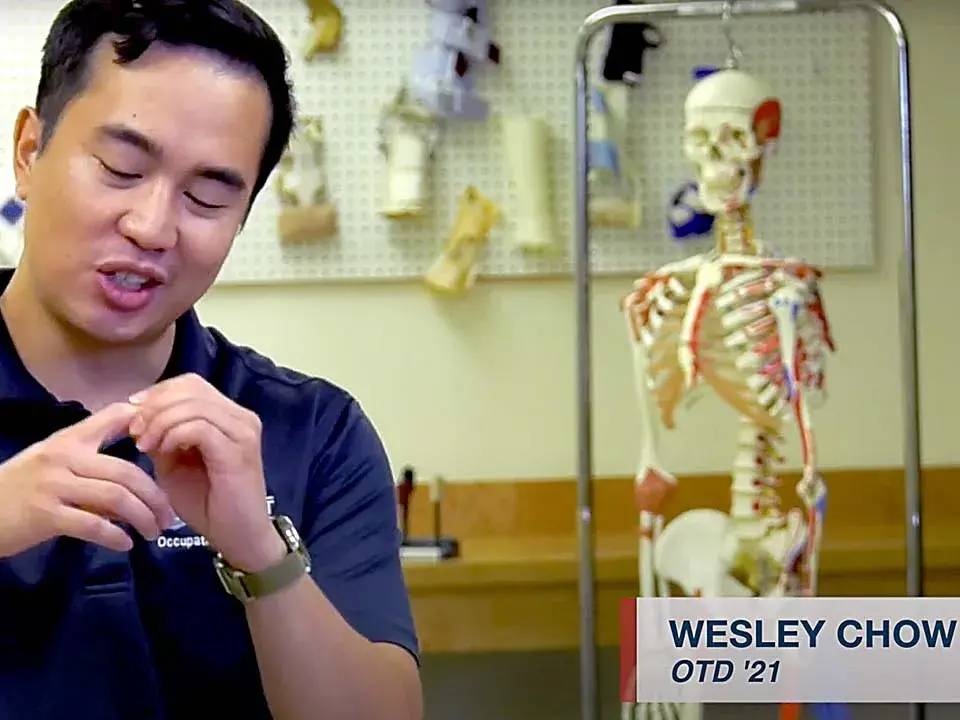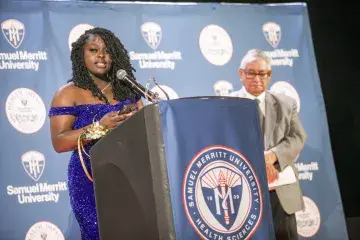OT Student’s Research Shines Light on 3-D Printing for Learning, Adaptive Devices, and Prosthetics
Wesley Chow, OTD ’21, took the University’s hands-on learning mission literally earlier this year when he printed 15 larger-than-life plastic finger bones using a 3-D printer. The finger bones were used as teaching props in class to demonstrate finger conditions that Doctor of Occupational Therapy students learn to diagnose and treat.
The 560-hour project was part of Chow’s capstone final research to demonstrate the benefits of using 3-D props for education.
How did you get started 3-D printing?
It was a hobby before I began at Samuel Merritt. I made things like puzzles, movie memorabilia, fun things here and there but nothing functional. Just as I started OT school, I realized there are a lot of actual uses for 3-D printing beyond just for fun. For example, some hobbyists print prosthetics for kids with fun designs so they’re more likely to use them. I always thought 3-D printing could be useful in OT, but I just wasn’t sure for what exactly.
Why fingers?
I created biomechanical models of fingers to demonstrate two different conditions that OT students learn about—bowstringing and trigger finger. These models are two or three steps up from viewing photos in a book and even a step up from anatomical models, which are more traditionally used in education—but nothing moves in those.
My models demonstrated movement—or in the case of bowstringing and trigger finger, impediment to movement—by adding joints and replicating what those soft-tissue structures do. In one of the models, I designed holes where I could string plastic lace through to simulate a tendon.
What did you use the models for?
I taught the concept of bowstringing and trigger finger to fellow students, as part of Associate Professor Ginny Gibson’s Applied Kinesiology and Biomechanics class. After I gave a presentation on the concept, we went to the lab and interacted with the models I had printed. For students who benefit from tactile learning, being able to feel the models and move them really helped drive the concepts home. The students were very enthusiastic about the models and told me how helpful they were. For a lot of them, the models helped them learn the concepts more deeply.
What’s involved with creating the models?
I first found online a free 3-D model of a fingerbone. I then uploaded it to a computer-assisted design program and started to tinker with it. I was able to add things to the model, like carving out a hole to create a spot where a hinge could attach to link the bone segments. It took me a few iterations between designing it online and then printing it to get to a final model where the movement was the way I wanted it.
For instance, if you look at when you open your hands all the way, you’ll notice that your fingers go back a bit farther than the back of your hand. I wanted to make sure the model captured that type of movement.
How many models did you print?
Ultimately, I printed 15 models total, with each one demonstrating both bowstringing and trigger finger. Each one took several hours to print.
Besides teaching props, what other OT uses are you interested in using the printer for?
I’ve made a prototype hands-free shaver. Essentially, it’s an electric razor that mounts onto a suction-cup base that allows someone with upper extremity limitations—say they have an amputation or can’t grip things—to lean into the razor to shave their face.
3-D printing is really useful for making these types of adaptive devices. Adaptive devices are common in occupational therapy. They help a person make up for some type of performance deficit. For example, if a person has trouble using a spoon because of tremors we can recommend a weighted handle for improved coordination when self-feeding.



